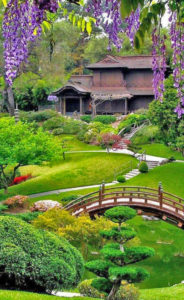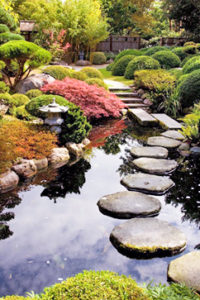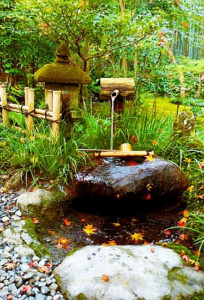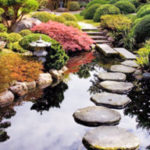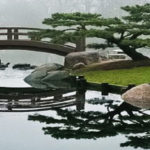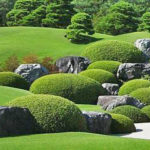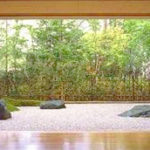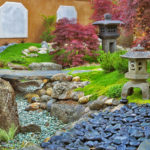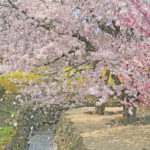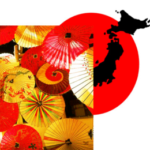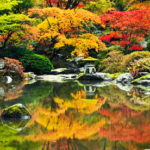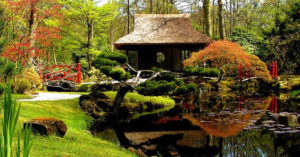 Japanese gardens have been inspiring more and more garden architects as well as gardeners themselves in the last century all over the world. Purity, simplicity, symbolism, harmony. All of us can evoke a pleasant feeling of peace. And above all, tranquillity and a slowdown in the flow of time is what in today’s increasingly hectic times we all,
Japanese gardens have been inspiring more and more garden architects as well as gardeners themselves in the last century all over the world. Purity, simplicity, symbolism, harmony. All of us can evoke a pleasant feeling of peace. And above all, tranquillity and a slowdown in the flow of time is what in today’s increasingly hectic times we all,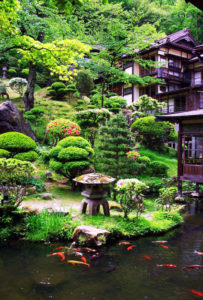 at least sometimes, want, look for, need.
at least sometimes, want, look for, need.
In Japanese culture, the creation of gardens is considered a high and prestigious art that has evolved over centuries. It was influenced by philosophies, such as Shintoism, Buddhism and Taoism. And, of course, the art of the tea ceremony. Japanese gardens have their laws, traditions, philosophies, specific elements. Understanding all the aspects and the symbolism of Japanese gardens requires a lot of knowledge.
Types of Japanese Gardens
Under the term of Japanese Garden, many people still imagine a garden full of bonsais and a very high demand for maintenance.
The styles of Japanese gardens are, however, quite diverse. Nevertheless, we can say that they are all made up to a certain conception of representing an ideal landscape. And that is through a certain symbolism and poetic narration. Even a way of looking at the expression of this ideal landscape divides traditional Japanese gardens into different styles. These styles are often combined and intertwined.
The most famous types of traditional Japanese gardens include:
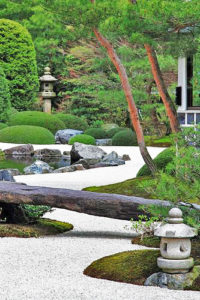 Karesansui, or a dry / rock garden, better known as Zen Garden – a classic type of meditation garden with minimal plant life.
Karesansui, or a dry / rock garden, better known as Zen Garden – a classic type of meditation garden with minimal plant life.- Tsukiyama (Garden of ponds and hills) – features a miniature of natural sceneries that include ponds and streams with fish, hills and stones, bridges and paths, trees and mosses, flowers and small plants.
- Roji, Chaniwa (Tea Garden) – Garden with quite a complicated structure and strict rules. It is designed to tune in its visititors to a tea ceremony in a tearoom built next to or inside the garden.
- Paradise garden – representing paradise or “pure land” – Jōdo. Originally designed for Buddhist monks to meditate and reflect in the beauty of the garden.
Aspects of Japanese gardens
Japanese gardens, regardless of the particular style, certainly have aspects, common features that characterize them. These include:
- Balance and harmony – everything fits together, everything is balanced, but not necessarily even.
- Space in the Japanese garden is used differently than in our gardens. Space is a component that helps define the elements that surround it. This again relates to the idea of balance. Space defines the elements inside and is defined by the things inside it. Here you can definitely say that less is more. With fewer components, each component has more meaning and has a greater weight and greater impact on overall appearance.
- The line of the garden – the lines and angles are rather rounded and organic to act as natural as possible – as in a real and natural landscape.
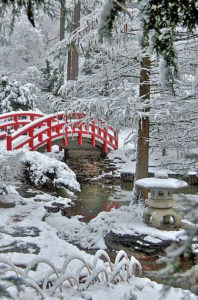
- Wabi and Sabi in the garden – uniqueness and patine, acceptance and perhaps a celebration of an impermanence of life generally (what is wabi-sabi here).
- Garden behind walls – Japanese gardens are often surrounded by walls as if enclosed in its own microcosm. It protects from an outside world disturbing the carefully designed balance.
- The beauty of garden throughout the year – the gardens are designed and maintained to bring beauty and a meditative feeling in all seasons.
Elements and Symbolism of Japanese Gardens
To achieve harmony, linearity, a sense of Wabi and Sabi and the meditative feeling in the garden space, a combination of elements and accessories typical of Japanese gardens are also used. Such elements include water (lakes, streams, waterfalls), stones, gravel, sand, islands and bridges, brick or bamboo fences and gates, teahouses and pavilions. With Japanese garden are connected also stepping stones, stone lanterns and statues, bamboo fountains and other (see more elements) are connected with the Japanese garden. Each element has different meanings and can symbolize many things.
In the Japanese garden, there is nothing accidental, everything has its substantiation.



